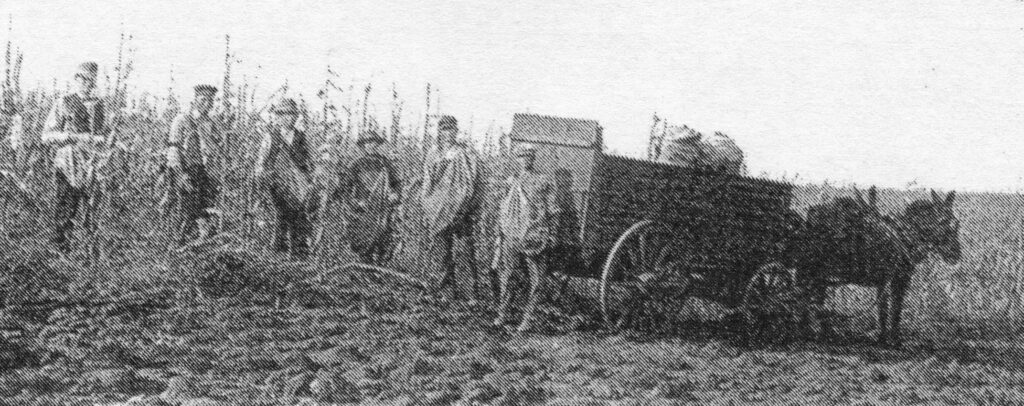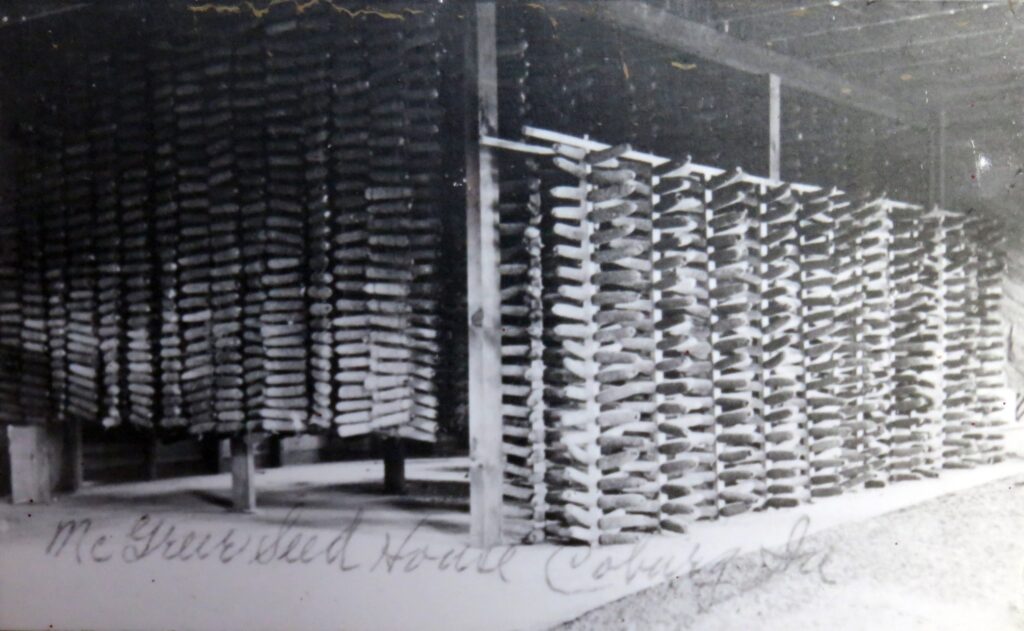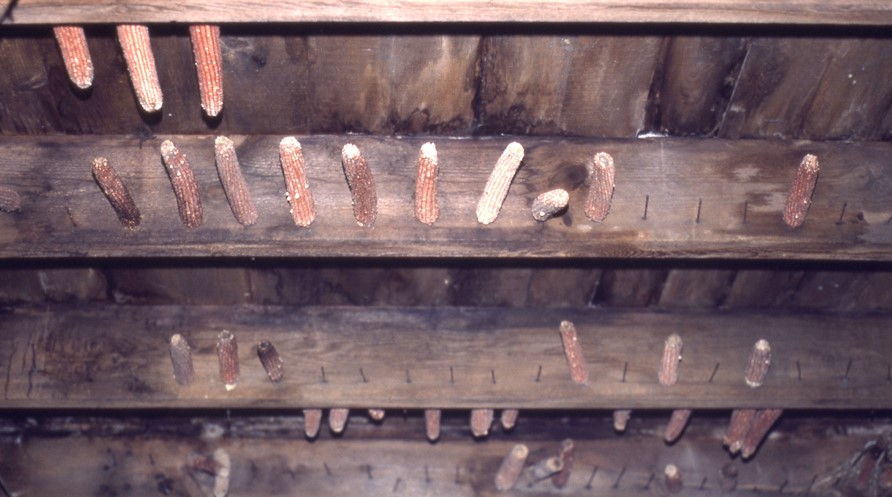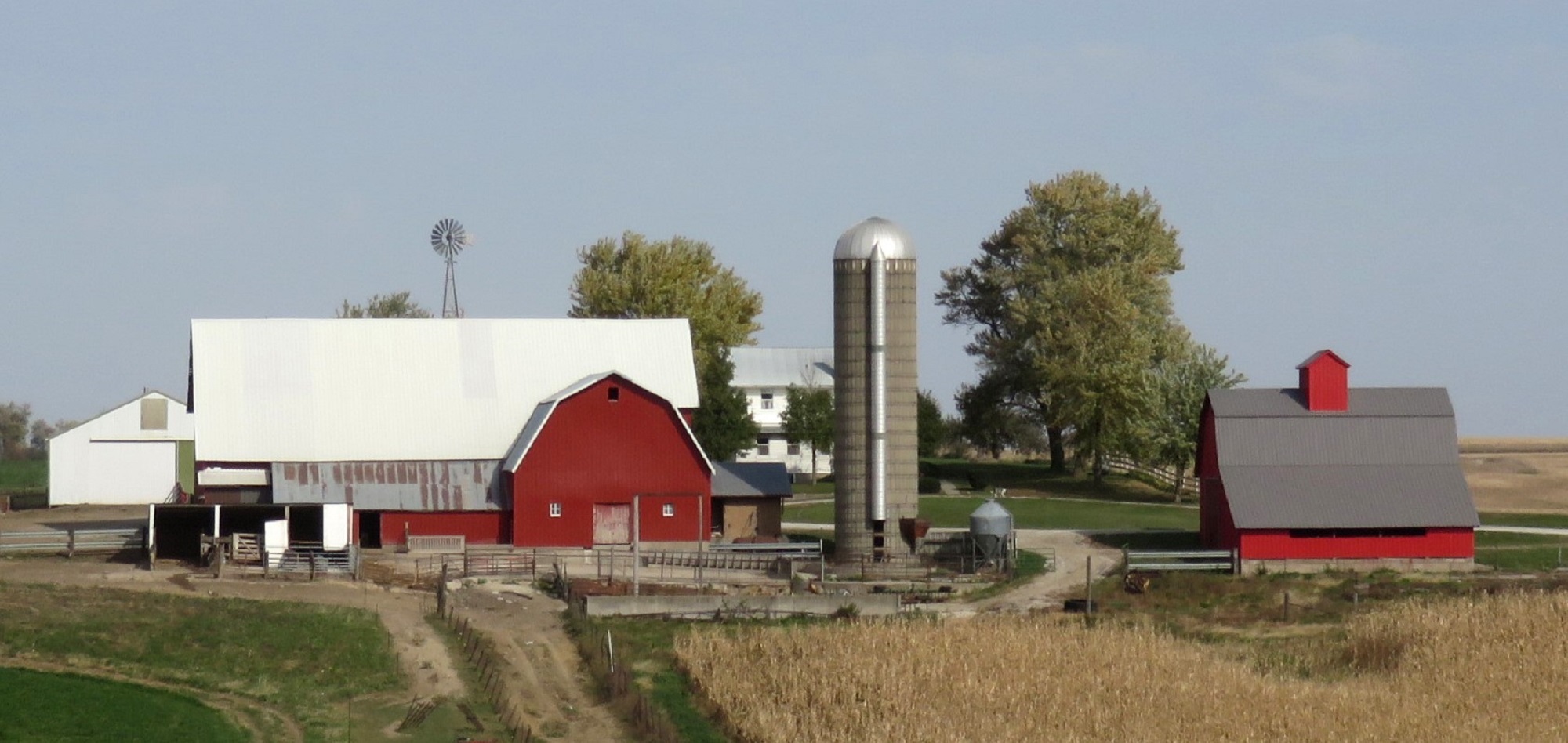
Seed experts they were! The McGreer brothers, Joe, John, and Frank, owned the 1200-acre Sunny Side Seed Farm in Montgomery County near Coburg. Corn was one of their specialties and high quality seed was essential. In the above photo, we see men who were hired to harvest corn on four separate farms. This enabled a number of varieties to be grown without a concern for cross-pollination.
Here is a brief description of the harvesting process as written in their seed catalog:“Between September 15 and October 15 we take a big bunch of men and go down the corn rows, pulling open the husks, looking at the ears and stalks to see if the ear will do to carry to the seed house. We only examine the large ears in the field, of course, and only bring in about 1/3 of those we examine.”
The corn was then loaded on wagons and hauled to the seed house. Imagine the work required for drying. “Our picked in a sack and dried on a rack” describes the corn seen in the postcard below.

Based on dates in customer reviews printed in the 1913-1923 catalogs, the company probably was in existence at the turn of the century. A farm of this size with so many products for sale in this time period is an amazing feat. They sold a number of varieties of seed corn, with yields from 60 to 100 bushels per acre, as well as oats, barley, maize, red clover, timothy, many garden vegetable seeds, baby chicks, and more.
In 1900 Coburg was a thriving town of 164 persons. A CB&Q branch line passed through the town, and was known for shipping of grain. The crates of corn shown below probably were shipped by rail.
(Note: A man who lives in the area saw my barn book and offered to copy several McGreer seed corn booklets he owned. I am grateful for his offer, as it enabled me to write a more complete story than what is found in my book.)

On a smaller scale, a Union County farmer impaled ears of corn on nails for drying, but would have needed a ladder to accomplish this feat. Not many ears remained in the barn in this 1980 photo but maybe he had removed enough for spring planting. Since the kernels were not yellow, but white and varying shades of red, it appears to be popcorn.


